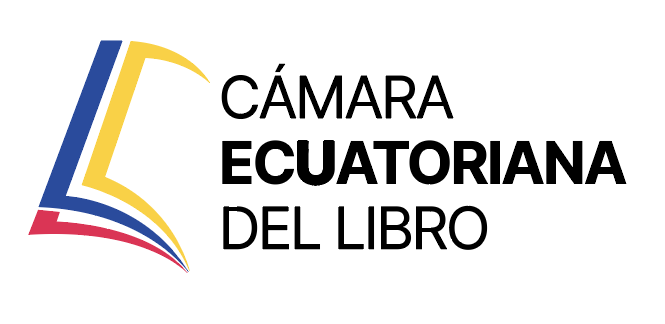FORMULACIÓN Y EVALUACIÓN DE PROYECTOS DE INNOVACIÓN EMPRESARIAL
Keywords:
Innovación empresarial, formulación de proyectos, evaluación de proyectos, transformación digital, desarrollo sostenible, pensamiento crítico.Synopsis
El presente texto surge como una respuesta a la creciente necesidad de contar con metodologías sólidas y actualizadas para la formulación y evaluación de proyectos de innovación empresarial en un entorno caracterizado por la disrupción tecnológica, la competitividad global y la transformación digital. Su contenido ha sido cuidadosamente estructurado para brindar a estudiantes, docentes, emprendedores, investigadores y profesionales del sector productivo una guía clara y rigurosa en el análisis, diseño y gestión de iniciativas innovadoras que contribuyan al fortalecimiento de los ecosistemas empresariales.
Es importante destacar que este texto no solo pretende ser un manual técnico de consulta, sino también una invitación a reflexionar sobre la manera en que la innovación puede convertirse en un motor estratégico de desarrollo económico, social y sostenible. A lo largo de estas páginas, el lector encontrará no solo metodologías de análisis de mercado, estudios técnicos, criterios financieros y marcos legales, sino también fundamentos conceptuales y propuestas aplicadas que promueven el pensamiento crítico, la toma de decisiones responsables y la generación de valor en contextos de alta incertidumbre.
References
Banco Interamericano de Desarrollo (BID). (2023). Políticas de innovación y financiamiento en América Latina. Washington, D.C.: BID.
Banco Mundial. (2021). Innovation Finance: Building ecosystems for entrepreneurship. Washington, D.C.: World Bank.
Banco Mundial. (2021). World Development Report 2021: Data for Better Lives. Banco Mundial.
Bican, P. M., & Brem, A. (2020). Managing innovation: What do we know about disruption? International Journal of Innovation Management, 24(1), 2050001. https://doi.org/10.1142/S1363919620500019
Blank, S. (2013). The Startup Owner’s Manual. K&S Ranch.
Blank, S. (2013). The Startup Owner’s Manual: The Step-By-Step Guide for Building a Great Company. Wiley.
Copeland, T., & Antikarov, V. (2001). Real Options: A Practitioner’s Guide. Texere.
Dahlander, L., Gann, D., & Wallin, M. W. (2021). How open is innovation? A retrospective and ideas forward. Research Policy, 50(4), 104218.
Damodaran, A. (2012). Investment Valuation: Tools and Techniques for Determining the Value of Any Asset. Wiley.
Damodaran, A. (2021). Corporate Finance: Theory and Practice (4th ed.). Wiley.
Drucker, P. (1985). Innovation and Entrepreneurship: Practice and Principles. Harper & Row.
Elkington, J. (1997). Cannibals with Forks: The Triple Bottom Line of 21st Century Business. Capstone.
European Commission. (2022). General Data Protection Regulation (GDPR): Guidelines for innovation projects. Bruselas: European Union.
European Innovation Council. (2023). Funding disruptive innovation in Europe. Bruselas: European Union.
Florida, R. (2005). The Flight of the Creative Class: The New Global Competition for Talent. Harper Business.
Freeman, C., & Soete, L. (1997). The Economics of Industrial Innovation (3rd ed.). MIT Press.
Friede, G., Busch, T., & Bassen, A. (2015). ESG and financial performance: aggregated evidence from more than 2000 empirical studies. Journal of Sustainable Finance & Investment, 5(4), 210–233.
García, M., & Torres, P. (2022). Gestión de portafolios de patentes en empresas innovadoras. Revista de Derecho y Tecnología, 14(2), 45–62.
Goffin, K., & Mitchell, R. (2021). Innovation management: Effective strategy and implementation. Red Globe Press.
Gompers, P., & Lerner, J. (2001). The Money of Invention: How Venture Capital Creates New Wealth. Harvard Business School Press.
Grant, R. M. (2021). Contemporary Strategy Analysis (11th ed.). Wiley.
Kaplan, R. S., & Norton, D. P. (1992). The Balanced Scorecard: Measures that Drive Performance. Harvard Business Review.
Knight, F. H. (1921). Risk, Uncertainty, and Profit. Houghton Mifflin.
Kotler, P., Kartajaya, H., & Setiawan, I. (2021). Marketing 5.0: Technology for Humanity. Wiley.
Lichtenthaler, U. (2022). Digitization, artificial intelligence, and innovation management. Journal of Business Research, 142, 110-120. https://doi.org/10.1016/j.jbusres.2021.12.005
Metrick, A., & Yasuda, A. (2011). Venture Capital and the Finance of Innovation. Wiley.
Murray, R., Caulier-Grice, J., & Mulgan, G. (2021). The open book of social innovation. NESTA.
Nonaka, I., & Takeuchi, H. (1995). The Knowledge-Creating Company: How Japanese Companies Create the Dynamics of Innovation. Oxford University Press.
OCDE. (2022). Tax incentives for research and development: Comparative study. París: OECD Publishing.
OECD. (2022). OECD Science, Technology and Innovation Outlook 2021: Times of Crisis and Opportunity. OECD Publishing.
Osterwalder, A., & Pigneur, Y. (2010). Business Model Generation: A Handbook for Visionaries, Game Changers, and Challengers. Wiley.
Pisano, G. P. (2019). The hard truth about innovative cultures. Harvard Business Review. https://hbr.org/2019/01/the-hard-truth-about-innovative-cultures
Porter, M. E. (1990). The Competitive Advantage of Nations. Free Press.
PwC. (2023). Global risks in innovation ecosystems. Londres: PwC.
Ries, E. (2011). The Lean Startup. Crown Business.
Rogers, E. M. (2003). Diffusion of Innovations (5th ed.). Free Press.
Schaltegger, S., Hansen, E. G., & Lüdeke-Freund, F. (2022). Business models for sustainability: Origins, present research, and future avenues. Organization & Environment, 35(1), 29-52. https://doi.org/10.1177/10860266211088569
Schumpeter, J. A. (1934). The Theory of Economic Development. Harvard University Press.
Shapiro, C., & Varian, H. R. (1999). Information Rules: A Strategic Guide to the Network Economy. Harvard Business Review Press.
Shapiro, C., & Varian, H. R. (1999). Information Rules: A Strategic Guide to the Network Economy. Harvard Business Review Press.
Stewart, G. B. (1991). The Quest for Value: A Guide for Senior Managers. HarperCollins.
Teece, D. J. (2021). Dynamic capabilities and organizational agility: Risk, uncertainty, and strategy in the innovation economy. California Management Review, 63(2), 5–21.
Tidd, J., & Bessant, J. (2018). Managing Innovation: Integrating Technological, Market and Organizational Change (6th ed.). Wiley.
Tidd, J., & Bessant, J. (2020). Managing Innovation: Integrating Technological, Market and Organizational Change (6th ed.). Wiley.
Tidd, J., & Bessant, J. (2021). Managing Innovation: Integrating Technological, Market and Organizational Change (7th ed.). Wiley.
Trigeorgis, L. (1996). Real Options: Managerial Flexibility and Strategy in Resource Allocation. MIT Press.
Varian, H. R. (2010). Intermediate Microeconomics: A Modern Approach. W. W. Norton & Company.
Wamba, S. F., Queiroz, M., & Trinchera, L. (2021). Dynamics between big data analytics capabilities and innovation performance. Information & Management, 58(8), 103-509.
WIPO. (2023). Intellectual property and innovation in the digital economy. Ginebra: World Intellectual Property Organization.

Downloads
Published
License

This work is licensed under a Creative Commons Attribution-NonCommercial-NoDerivatives 4.0 International License.







